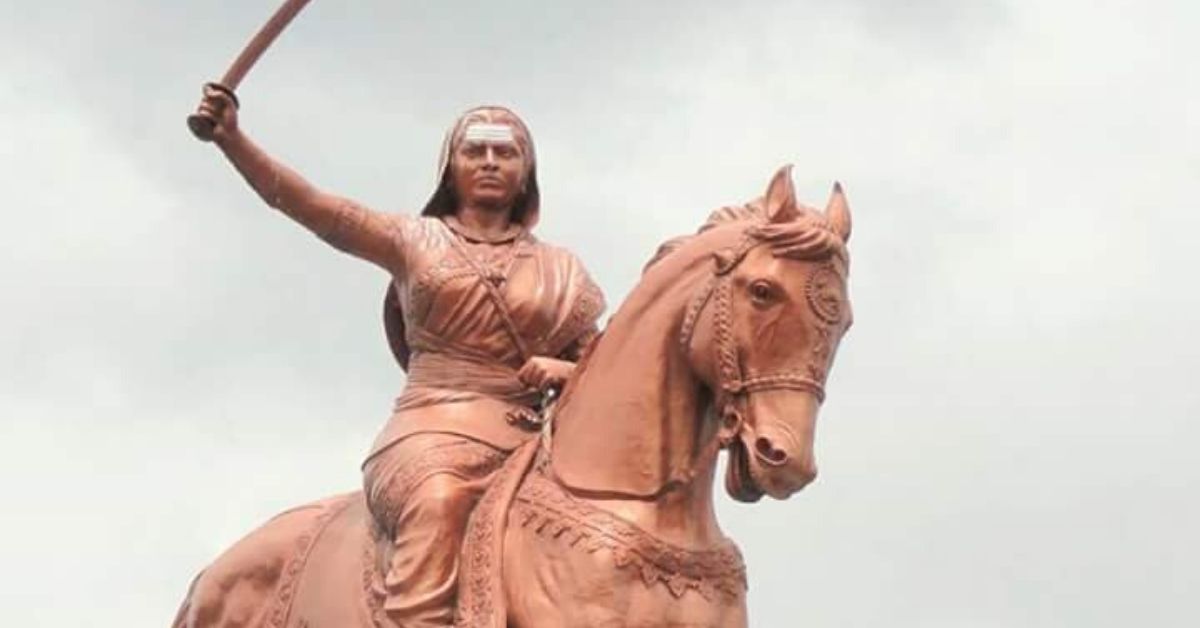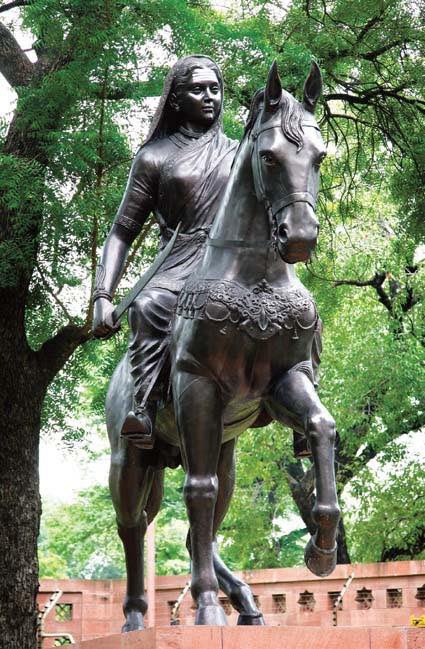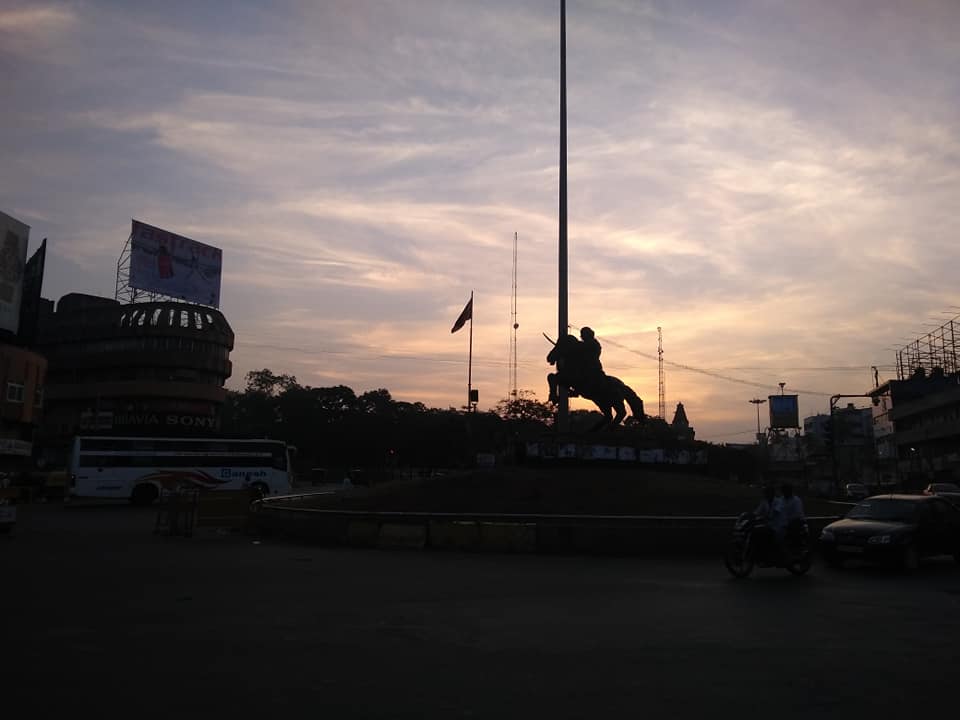Way Before Laxmi Bai, This Warrior Queen Fought & Defeated the British
Single-handedly taking on the might of the British Empire, Rani Chennamma redefined empowerment, bravery and feminism in an era when women were expected to stay indoors.

Before Rani Lakshmibai, there was Rani Chennamma, one of the first Indian rulers to lead an armed rebellion against the East India Company.
The warrior queen, who was from a small village name Kakati, which is located in the Belagavi District of Karnataka, single-handedly took over the mighty British empire and defeated them.
Save the environment and your baby with reusable organic diapers. Check out reusable cloth diapers with quirky filmy prints, here.
Born To Be A Warrior
Chennamma was born in the Lingayat community on 23 October in 1778. Right from a young age, she was taught all the skills required to win a battle including horse riding, sword fighting, and archery and became the talk of the town in no time, for her bravery.
At 15, she married Mallasarja Desai, the King of Kittur. After he passed away in 1816, and her son passed away in 1824, Chennamma adopted a boy named Shivalingappa and made him heir to the throne so that family legacy could continue.

At the time, the East India Company had imperial administrative jurisdiction over several regions of the country and had annexed many Indian states under the ‘Doctrine of Lapse,’ an annexation policy.
According to the doctrine, any Indian princely state under the control of the East India Company would have its princely status abolished and therefore annexed into British India if the ruler was either “manifestly incompetent or died without a male heir.”
Chenamma’s decision to adopt Shivalingappa and make him an heir to the throne did not go down well with the East India Company, and they ordered that he be exiled.
She refused to accept the arbitrary doctrine and the exile of Shivalingappa and appealed to Lord Elphinstone, the Lieutenant-Governor of Bombay, to let her son become the king.
The plea was rejected, and the Dharwad collectorate took over the administration of Kittur. Their desperation of the British was clearly evident as the kingdom was usurped in 1824, long before Lord Dalhousie, the then Governor-General, officially pronounced the doctrine in 1847.
Chenamma was informed that the new ruler and regent were not recognised, and Kittur would have to accept the British regime.
Fighting the Battle

Due to her continued resistance, the British army attacked Kittur on 21 October 1824, with 20,000 men and 400 guns. The intention was to confiscate her jewels and treasures worth Rs 1.5 million, make her economically weak and then dethrone her.
Despite having a numerically inferior force, Chennamma put up a tough fight and won the first round of battle. The British army faced a massive loss, and eventually, two British officers, Sir Walter Elliot and Mr Stevenson, were taken as hostages to have the upper hand in the negotiations.
Chennamma agreed to release the hostages if the British would end the war and allow her son to rule. Commissioner Chaplin from the East India Company took the offer, and the hostages were released.
However, in an unforeseen turnaround, the British troops launched the second round of attack. They could not take the humiliation of losing to a woman from a small village and roped in armies from Mysore and Sholapur (Solapur). They also convinced two of her soldiers to betray her by mixing cow dung and mud with the gunpowder used for canons.
This time, she was captured and imprisoned for life at Bailhongal Fort. She passed away on 21 February 1829.
Sangoli Rayanna, one of her most loyal and courageous lieutenants, undertook her mission and fought the war till 1829 before he was hanged to death. Her son Shivalingappa too, was arrested by the British.
Rani Chennamma was buried in Bailhongal taluk, and her burial place is currently in a park maintained by the Government. Her legacy and first victory are still commemorated in Kittur, during the Kittur Utsava held from 22–24 October.

On 11 September 2007, President Pratibha Patil unveiled a statue of Rani Chennamma of Kitturu at the Parliament complex in Delhi.
Chennamma’s valour and zeal to serve her people is remembered even today. She became an inspiration for everyone, especially female freedom fighters and stories of her bravery will live on through plays, movies and folk dances.
Featured Image Source: Girish Alva/Twitter
Also Read: Erased by History, These ‘Tawaifs’ Were Unsung Heroines of India’s Freedom Struggle
(Edited by Gayatri Mishra)
Like this story? Or have something to share?
Write to us: [email protected]
Connect with us on Facebook and Twitter.
If you found our stories insightful, informative, or even just enjoyable, we invite you to consider making a voluntary payment to support the work we do at The Better India. Your contribution helps us continue producing quality content that educates, inspires, and drives positive change.
Choose one of the payment options below for your contribution-
By paying for the stories you value, you directly contribute to sustaining our efforts focused on making a difference in the world. Together, let’s ensure that impactful stories continue to be told and shared, enriching lives and communities alike.
Thank you for your support. Here are some frequently asked questions you might find helpful to know why you are contributing?


This story made me
-
97
-
121
-
89
-
167











